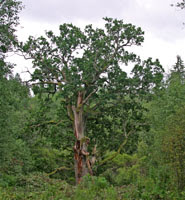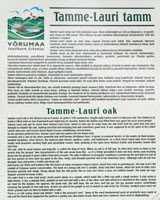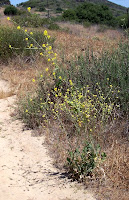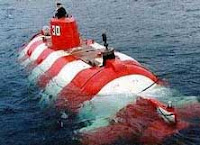The story:
President George W. Bush stirred the debate on the teaching of evolution in schools when he said this week that he supported the teaching of alternative viewpoints - such as the theory of Intelligent Design - to help students "understand what the debate is about".
"I think that part of education is to expose people to different schools of thought," Mr Bush said in comments to five Texas newspapers on Monday. "You're asking me whether or not people ought to be exposed to different ideas, the answer is yes."
Although Mr Bush did not explicitly endorse the concept of Intelligent Design, which contends that certain features of biological systems are best explained by an "intelligent" cause rather than by natural selection, such influential groups as the National Academy of Sciences strongly oppose the teaching of ID in schools.
The story above (excerpted from the Financial Times), with minor variations, was reported all over the MSM yesterday. I first read it in a rather hysterical post on a liberal blog, where it was interpreted as Bush was about to force all schools to teach 'intelligent design' (which I put in scare quotes because I do not believe it is a legitimate scientific theory). On reading in more sober reports what Bush actually said, I am slightly comforted...but only slightly. Tigerhawk captures my personal response best in his excellent post titled "Sigh", here excerpted in its original entirety (it has since been updated):
Why, oh why, must our President, who is right about so many things, insist that idiocy is a form of intellect.
Thanks, Tigerhawk, for that succinct summary. And for the pointer to Charles Krauthammer's column in Time Magazine on the subject. Mr. Krauthammer doesn't mention Bush's remarks, but forcefully makes the argument that it's a bad mistake to teach something that is faith (meaning 'intelligent design' as if it were some form of science (such as evolutionary theory). And he gets it exactly right when he calls 'intelligent design' a "tarted-up version of creationism."
On the other hand, there are a few conservative voices supporting Bush's position. Right-Thinking Girl says:
Though I am positive that Bush's detractors will no doubt start crying "theocracy!" at the mere mention of Intelligent Design, I think this is a good idea. I am not interested in having Christianity taught in public schools, per se, but I believe that schools are places to challenge one's own body of knowledge. If evolution is perceived to be the "anti-religion", I think that there should be a counterweight to that. Though Intelligent Design is not Christian in nature, it does encourage the possibility of a Supreme Being. Good for Bush, speaking up on such a controversial subject.
Well, maybe. I'm not buying the "'intelligent design' isn't Christian" notion — so far as I can tell, it is entirely the construct of fundamentalist and radical Christians, exactly the tarted-up version of creationism that Mr. Krauthammer paints it as. Right-Thinking Girl's point about the need for a counterbalance might make sense in some kind of philosophy curriculum, but certainly not in a science classroom. Science is about truth, and truth is inherently "unbalanced" in the sense she means.
And then there's GrrlScientist's rant at "Living the Scientific Life":
Well, if we are going to be truly open-minded about this, bushco would propose equal time for ALL other creation myths floating around out there.
But the problem with this unexpected rush of open-mindedness is that bushco once again misunderstands science: science is not about presenting different creation mythologies as if they are Flavors of the Week at the local ice cream shop. In fact, there are thousands of peer-reviewed research articles that provide yet more evidence for the Theory of Evolution but there is absolutely no scientific credibility, and absolutely no data, that support ID/creationism. How long will it take before this simple fact finally sinks in? In view of this fact, forcing teachers to present ID in a science classroom is absolutely ludicris.
I regularly read GrrlScientist's blog because she shares an interest of mine (birds). I'm an amateur bird-watcher; she's a scientist, an ornitholigist if I'm not mistaken (and she's looking for a job, if any of you have one available). We do not share much common ground in politics, however. Every once in a while, she'll post a rant about Republicans in general, and Bush in particular, which mostly I've ignored except for their entertainment value, as they've been along familiar themes and lines of argument. This time, though, I do find some common ground with her rant. I admit to some discomfort at that realization <smile>.
My hope is that Bush will wake up to the bad politics his comments represent, and will make some clarifying remarks to defuse the negative reactions from (what I fervently hope is) the majority of his base. Including myself.

 "Tamm" is the Estonian word for an oak tree. It's pronounced almost like my name (Tom), but with an "ah" sound. There is a tradition in Estonia of preserving and naming the biggest trees of each major species, and also for large groves or unusual trees. My map of Estonia contains perhaps two hundred such marked trees, and all the ones I've visited so far (something like 30 or 40 of them) have signs or other markings, and usually some parking and a path to the tree or trees. I have no idea of the origins of this custom, and I have not yet ever found anyone else visiting the trees to ask. But I like it, and I've very much enjoyed finding and visiting various trees.
"Tamm" is the Estonian word for an oak tree. It's pronounced almost like my name (Tom), but with an "ah" sound. There is a tradition in Estonia of preserving and naming the biggest trees of each major species, and also for large groves or unusual trees. My map of Estonia contains perhaps two hundred such marked trees, and all the ones I've visited so far (something like 30 or 40 of them) have signs or other markings, and usually some parking and a path to the tree or trees. I have no idea of the origins of this custom, and I have not yet ever found anyone else visiting the trees to ask. But I like it, and I've very much enjoyed finding and visiting various trees.
 This oak tree is the largest one in Estonia — a very famous oak called the Tamme-Lauri Oak. If you enlarge the picture of the sign at right, you can read all about it. A drawing of this particular oak adorns the Estonian ten-kroon note (Estonian currency is denominated in kroons until they adopt the Euro, scheduled in early 2006).
This oak tree is the largest one in Estonia — a very famous oak called the Tamme-Lauri Oak. If you enlarge the picture of the sign at right, you can read all about it. A drawing of this particular oak adorns the Estonian ten-kroon note (Estonian currency is denominated in kroons until they adopt the Euro, scheduled in early 2006). 


 The story, as reported by The Age (Australia):
The story, as reported by The Age (Australia):